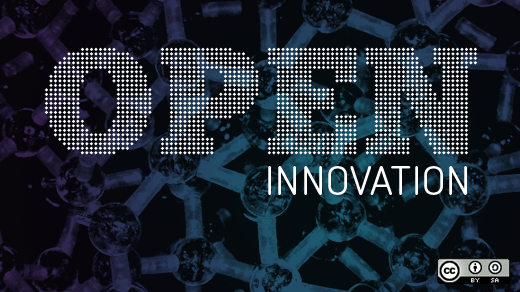Last week Peter Levine, former XenXource CEO and current Andreesen Horowitz partner, wrote an article for TechCrunch: Why There Will Never be Another RedHat: The Economics of Open Source. In that article he makes a reasonable case for opining that the likelihood of another company achieving Red Hat-scale success based on wrapping services around an open source offering is very low. Instead, he proposes that the model that can lead to significant success is to include open source components in a service that includes additional (presumably proprietary) functionality and/or services.
He’s right, but only partly so. What is odd is that in making his argument, Levine comes right up to the edge of understanding the single factor that will enable entrepreneurs and VCs to be able to predict where such efforts are likely to succeed and where they will almost certainly fail, just as the Red Hat model has failed to work for so many businesses trying to replicate its success in the past.
What Levine leaves out of the equation is an awareness of two factors that will allow a business based on his model to attain a market leadership position. The first is understanding where to find the sweet spot where the benefits of shared innovation and labor (but absence of proprietary ownership in the result) are perfectly balanced by the resulting opportunities to make a profit based upon value added features and services (often proprietary) that can be built on top of the collaboratively produced layer. Where the balance is right, there is plenty of incentive for collaborators to join together, as well as the strong potential for a rich ecosystem of possibilities to develop on top of the resulting, commonly available layer.
This is hardly an obscure concept. After all, it’s the dynamic that forms the foundation for every open standards development project that has ever existed. Levine gets the general idea when he proposes his new approach, but instead of pulling it apart to understand when it will work and when it won’t, he simply gives examples of the successes that companies are already having repackaging open source components in their own offerings. He observes:
This recipe—combining open source with a service or appliance model—is producing staggering results across the software landscape. Cloud and SaaS adoption is accelerating at an order of magnitude faster than on-premise deployments, and open source has been the enabler of this transformation...
So what are you waiting for?
Build a big business on top of and around a successful platform by adding something of your own that is both substantial and differentiated.
If this is as far as the thinking goes, then there will indeed be opportunities for a variety of modest businesses to be launched, because the big opportunities—the ones to be the next Google or Facebook—will already have been taken. So without more, it’s not likely that there will be any Red Hats at all, or that VCs will have any better success in investing in the next crop of open source startups than the last one. In other words, the big money is to be made in the hubs of an ecosystem, and not in the spokes.
Why? Because simply bundling free software with proprietary wares isn’t enough. Or, hopping on board a platform that has already achieved recognized success. If you want to be the next Red Hat or Google, just as with any other homerun play, you’re going to have to be able to suss out what the future holds before it arrives. And happily, in this case, that’s possible, because you only have to look to the past to tell which horses to bet on.
Here’s how it should be done. Let’s start by identifying the key attributes of a rapidly expanding ecosystem, such as the one based on the Android mobile operating system:
- A very large potential marketplace, providing enough revenue potential to provide plenty of winners rather than just one
- A large range of potential products and services that can be sold into the marketplace, providing yet more opportunities for winners, and a level of proprietary ownership in the differentiated elements of those products and services to provide sufficient incentives to make the investment in developing them
- A significant likelihood that the customer will decide to buy these products and services once they are available
Each of these factors is equally important, because each is necessary to kick off the type of virtuous cycle that enables the result. And each of these factors can be researched and assessed in advance.
If a strong case can be made that each of these factors is present, then the steps needed to realize upon the opportunity can also be described:
- The vision of a successful outcome must be clearly defined and articulated, including the following:
What are the fundamental capabilities that the product code will enable or support?
What are the architecture, functions and features of the code that needs to be developed to create and support those capabilities?
What are the other activities that will be needed to ensure the outcome (e.g., promotion, branding, liaison relationships, and other essential tools)?
- Designing the technical, marketing, and working group structure needed to support the development of not just the code, but any other tools and activities as well.
- Creation of the right governance structure and Intellectual Property (IPR) rules to support these efforts, to assure founding participants that there will be a level playing field both during development and thereafter.
- Development of an appropriate budget, recruiting and staffing plan, and other details to demonstrate that the project is feasible and affordable, and can be rapidly launched.
- The right pool of founders for the project must be recruited, which is crucial for multiple reasons:
It leads each founder to conclude that the software will in fact be created, because the skill and labor is present.
It indicates that there will be a sufficient number of adopters of the code when it is completed to form a sufficient basis for an ecosystem to evolve.
It tells other vendors and service providers that joining in the effort will be worth their while, because the commercial opportunities will follow.
It tells the marketplace that success is likely, and that customers should already be thinking about incorporating the resulting products and services into their own future purchasing plans.
- A public launch must be skillfully planned and executed, to get the maximum attention and credibility from the outset.
- Development must proceed on schedule, conjoined with an ongoing public relations campaign informing the marketplace of the continuing success of the effort.
- When productization becomes possible, a coordinated program of press releases should support continuing momentum in the marketplace.
Where all of the above are brought into play, real opportunities can and often will result.
The bottom line, therefore, is that in order for the model promoted by Levine to succeed, it’s predicated on the existence of underlying projects that achieve the balance of benefits that I alluded to above. Without the right scope of opportunity, sufficient success in recruitment, and abundant skill in execution, there will be no more Red Hats emerging from this new model than the last. But where this methodology is understood and followed, not only will such opportunities emerge, but they will do so with far greater predictability than in the past.
And that’s good for entrepreneurs and investors alike.





1 Comment